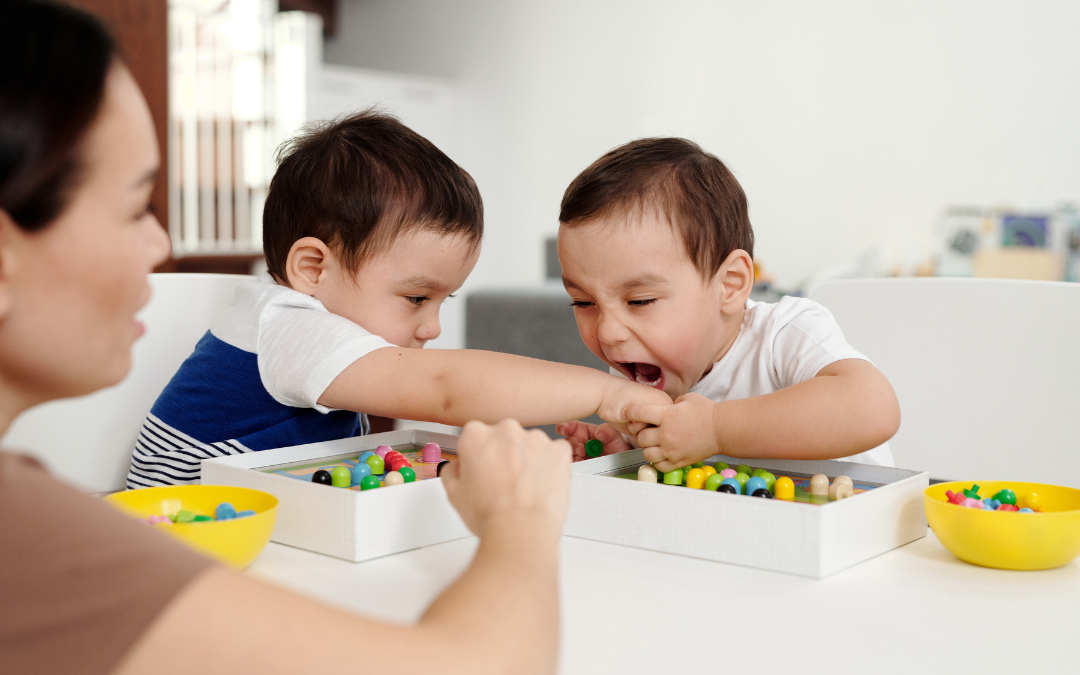
Do you have a child whose behaviors challenge you?
Have you read all the books, and listened to all the podcasts, but you still can’t figure out what to do?
Have you tried everything, but nothing works?
Do you want to know the secret to minimizing children’s behaviors that challenge adults?
BOUNDARIES!
Yes, boundaries! As in rules and expectations.
- Have you set clear boundaries for your child?
- Does your child know what behaviors are OFF LIMITS?
- Does your child know what behaviors are acceptable, or how to behave in different situations?
Did you know that most of the behaviors that challenge adults start out from a developmental need of the child?
Behaviors like biting, throwing toys, hitting, and yelling and that we see in toddlers and young children are not socially acceptable. However, many times, these behaviors are developmentally appropriate, often stemming from a child’s frustration. Young children don’t have the vocabulary (or impulse control) to to tell us what they are thinking and feeling, so they act out to get our attention.
How adults respond to these behaviors is what determines what a child does next.
So hear me out…
- How did you know not to eat someone else’s food in the fridge at work?
- How did you know that you needed to wait in line at the checkout at the store?
- How did you know to silence your phone during a movie or play?
- How did you know not to touch a hot stove?
At some point in your life, these unwritten rules were told to you. And if you didn’t follow these rules, there were consequences.
It’s no different with children.
Young children do not know how the world works. They need adults to teach them what to do and how to behave in different situations. They need adults to tell them when something is OK and when it’s not. And if a behavior is not OK, children need to know there are consequences if the behavior continues.
Yes, undesirable behaviors have consequences. If you talk on your phone in a movie theater, there’s a good chance you’ll be asked to leave. If you cut in line at the store, there’s a good chance the other customers will call you out, and you won’t be checking out as quickly as you had hoped. And, if you touch a hot stove, you’re going to get burned.
Children need to know you will not tolerate their misbehavior. They need to learn that there are consequences for their actions.
The age of the child and the type of behavior will determine what type of consequence there will be.
For example, a child who bites might be hungry, tired, frustrated, or overstimulated. For babies – 3-year-olds biting is a developmental response. It’s just not socially acceptable. No one wants to be bitten. It hurts!
If the adult says “OUCH,” and then gives a long-winded explanation that biting hurts, and we don’t do that, and how would you like it if I bit you? Or, the adult says “no thank you,” or “I’m sorry,” and continues with “Please don’t bite. Let’s try something else. Here, have a lollipop (or a toy, or anything)” all the child hears is the Charlie Brown teacher, “Whomp whomp whump whomp whomp whomp whomp whom.” The haven’t learned anything. And chances are, they will do it again.
But if instead, the adult says “NO!” or “STOP!” and immediately removes the child from the situation, you’ve started to set boundaries and expectations. Your actions let the child know that biting is not OK. The consequence is that they are removed from the situation.
No long explanations. No rewards. No additional attention in the moment. No trying to explain or teach the child about biting.
You CAN teach a child that biting is not OK. But we humans can’t learn when we are upset or frustrated. Our brains are too overloaded in the moment. After we’ve calmed down, that’s when learning can happen.
How adults respond in the moment a child’s behavior that challenges us sends a message to the child, and teaches them what to expect from adults. If the adult reaction is “NO!”, the child learns the behavior is not allowed. If the adult’s reaction is “Please don’t bite. Let’s try something else. Here, have a lollipop (or a toy, or anything)” the child often begins to learn how to manipulate adults to get what they want.


What else can adults do to minimize challenging behaviors? Be consistent!!!

Want to learn more about how to minimize children’s behaviors that challenge adults? Click the link below and see how we can support you.
https://forms.office.com/r/8Enbgr8n9V


Recent Comments